Review: Sony Ericsson Vivaz - part 1 (hardware and first impressions)
Sony Ericsson's latest, their second generation S60 5th Edition smartphone, has arrived. It's smaller and lighter and more modern that you might believe, allied to superb camera and camcorder functions - but has Sony Ericsson made the same mistake as on the Satio and not put enough effort into the software? Steve Litchfield finds out in this, the first part of our Vivaz review.
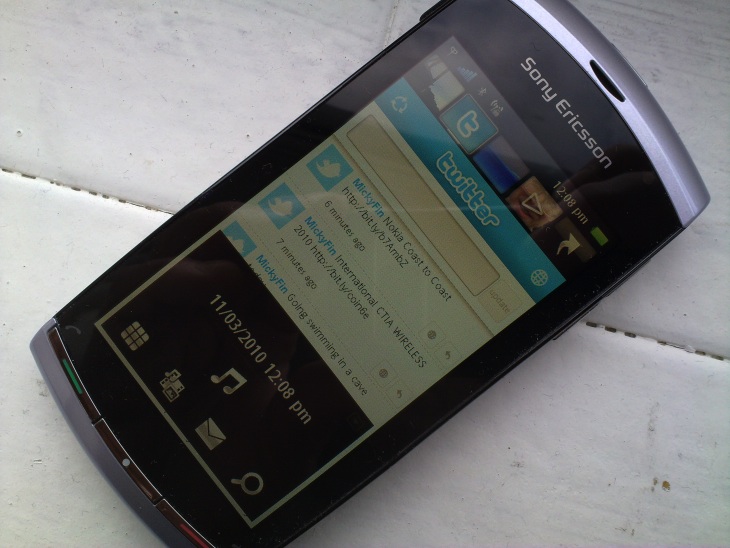
A cliche, but the photos of the Sony Ericsson Vivaz really don't do it justice. It's smaller than you might think, smaller even than Nokia's diminutive 5530, despite having a 3.2" TFT screen. Sony Ericsson have made the utmost of the space available, especially so when you look at the styling. The company calls it 'human curvature', wherein almost every edge on the device is naturally curved to mimic the curves in nature and to sit well in the human hand. This may sound a little over the top, but this is the nicest smartphone to hold in the world. By some margin.
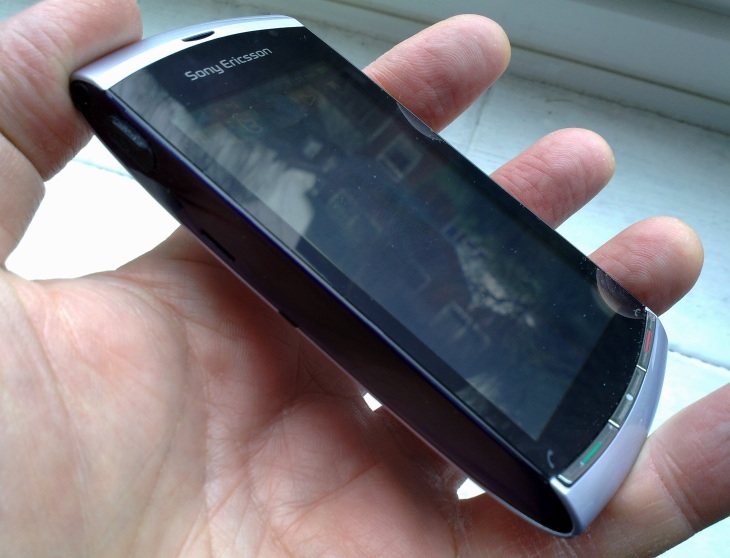
Adding style are twin translucent side panels - these catch the light in a rather beautiful way - top marks, here, Sony Ericsson. The tapered top and bottom, plus the overall weight of only 97g(!), mean that the device feels very slight and you wouldn't guess that it housed a very powerful processor and camera. The size and weight are so slight that, in truth, after slipping the Vivaz into the front pocket of my jeans, I have (several times) been caught out wondering where the phone was and realising it had been with me all along. There haven't been many smartphones that you could say that about.
Learning lessons from the ill-fated Satio, the buttons and general trim are much better finished - the Vivaz definitely does not look cheap.
Of special note in the Vivaz's hardware are (working my way around the device anti-clockwise):
- The power/profiles button on the top - some people say that this is too easily pressed by accident, but I think it's perfectly placed and weighted.
- The 3.5mm audio/TVout jack is beautifully positioned, snug in the top left corner, it's something of an electronic miracle how Sony Ericsson managed to fit it there at all
- The microUSB port has a tethered plastic cover, which does the job but part of it sticks out when closed - and all of it gets in the way when trying to plug in a cable. If this was my Vivaz, I'd be tempted to tear off the cover and leave the port 'commando'...
- A tiny and rather pointless speaker port. I say pointless because covering it up has very little effect - the actual (mono) speaker is deep inside the device and the sound gets out in a dozen ways, it seems.
- A completely pointless little plastic tab - it sticks out for no reason and all I can think of is that it's there to give extra finger grip.
- Three physical control buttons - call/menu/hangup - these work much like the trio on other S60 5th Edition phones - they're fairly insubstantial but then again at least they're buttons and not just touch-sensitive areas, as on some other modern phones.
- Stills camera shutter button - a long press on this and, even when keylocked, the Camera app pops up on screen. It's not the largest shutter button ever, but it does the job well, in the usual focus, then press further to take the shot fashion.
- Video camera button - a Vivaz innovation. As with stills, a long press on this and the Camera pops up, but in camcorder mode. And what a camcorder - but more of that later.
- Volume up/down buttons, doubling as zoom controls in the camera modes (bad move - never use digital zoom on these devices - unless you have a Nokia N86, which does things differently) and in the media viewer suite.
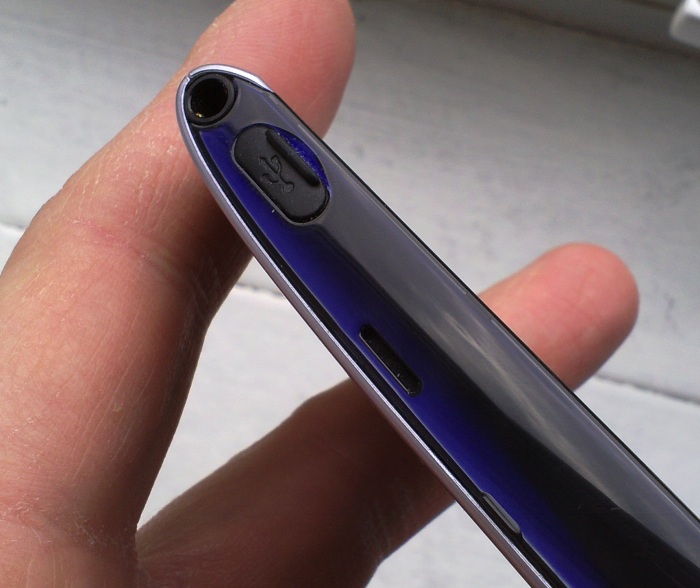
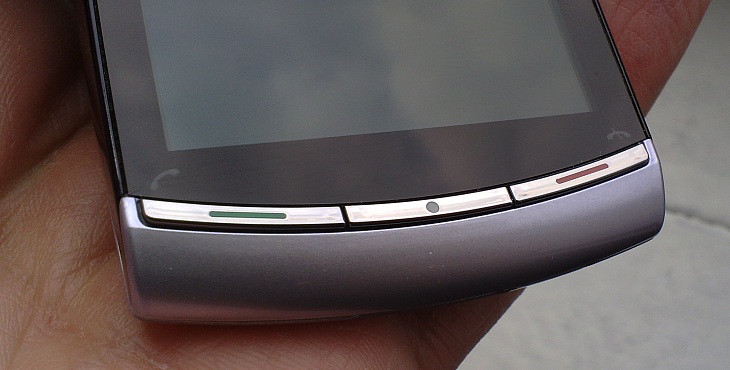
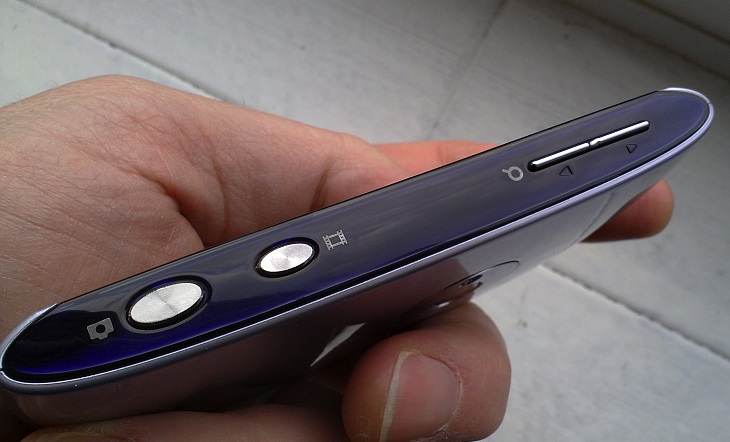
The Vivaz really is a nice little package - it sits in the hand so well, I instinctively felt that this is how a phone - or indeed a smartphone - should look and feel - Sony Ericsson has got this aspect 100% right. To be fair, there are a few minor negatives on the hardware side too that I have to mention at this point:
- The screen's TFT, meaning that it's nice and bright indoors but isn't brilliant on a bright cloudy day and then fades into nothingness when out in direct sunlight. Yes, I know there are always compromises with screen technology, but come on - elder sister Satio had a transflective screen that was at least vaguely usable in sunlight - why the change in screen tech? After all, the Vivaz is just as much focussed(!) on photography (both stills and video) as the Satio, and yet you can't actually see what you're shooting most of the time. Manufacturers of camera phones should start the design process with 'OK, let's make sure that on nice sunny days when users are going to want to use this device, that the display is visible'. Which means going down the transflective route, in good company with the likes of the Apple iPhone, Nokia N97, Satio, and most older Nokias.
- The touch screen's resistive rather than capacitive - this is a debate that I've gone over before - both have their pros and cons, so I'm not going to pronounce ultimate judgement, other than to note that the resistive touch layer probably plays its part in reducing screen visibility. It has been noted by others that the use of a glass (rather than plastic) substrate for the screen makes a positive difference, but to me it's marginal at best. And there's still the squishy outer layer etc.
As with the Nokia N97 mini, the 3.2" screen size is just about perfect for nHD (640 by 360 pixels) screens and S60 5th Edition. You get a display that can be traversed if needed by your thumb, enabling one-handed use in traditional phone manner.
Under the hood, the Vivaz is well specified, with a 720 MHz processor, with PowerVR SGX graphics built-in, making it powerful enough to handle both playback of various video streams and also to handle captured HD video. There's a 77MB internal (C:) disk, of which roughly 55MB are free to the user after the initial switch on. This isn't massive, but given that we've not got numerous Nokia addons insisting on installing themselves into C:, this system disk storage should be fine for most users. There's no mass memory disk, sadly - one positive that we've come to expect from recent Nokia and Samsung Symbian phones. All you get here is a microSD slot, albeit loaded up with a 8GB card out of the box.
RAM is great, as on the Satio - there's over 150MB free after booting, so low memory will at least never be a problem on the Vivaz, unlike every Nokia S60 5th Edition device so far [mutters....]
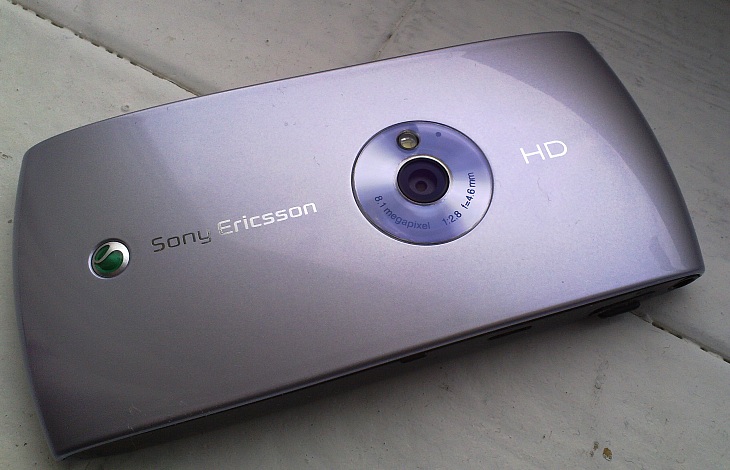
Powering the Vivaz is a 1200mAh cell, i.e. 20% more capacity than the Satio's battery. I've not had the Vivaz long enough to test this fully, but I'd estimate the battery will be more than up to the job. After all, you're not going to have hour-long web browsing sessions or watch feature films on this thing. The Vivaz is about media capture and fun.
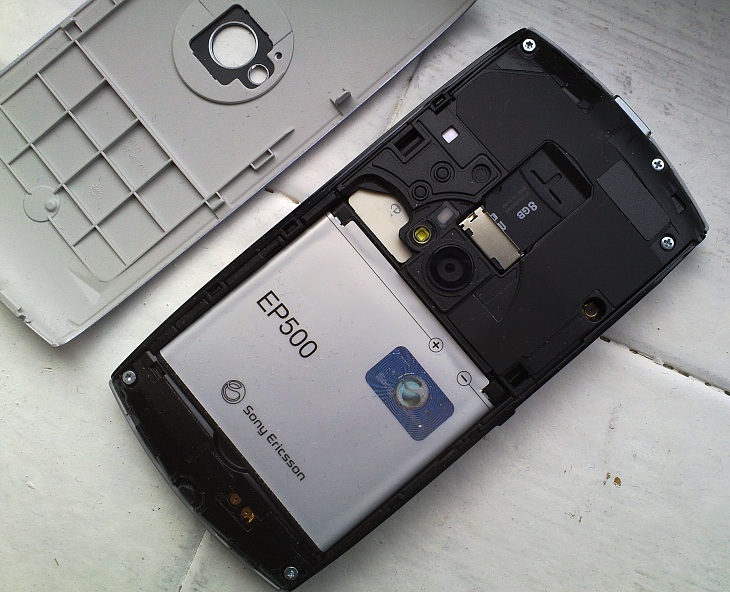
Creating a piece of hardware with so many curves must have produced some production headaches - you can get an idea of some of the complexities by taking the back off (though it's hard to appreciate it all in a 2D photo). The microSD card is unusually placed but easy to extract when needed. The camera glass is that of the camera itself, since this 'pokes through' the back cover, avoiding having yet another layer of plastic between the outside world and the camera lens.

Ah yes, the camera, undoubtedly the highlight of the Vivaz - even over the human curvature design. The lack of camera glass protection is a little worrying, as is the prominent place on the device's back, but that aside there's very little complain about here. The 8 megapixel photos are, in good light, superb, as you can see here (click through to enlarge or download the original JPG):
There will be more camera samples in part 2 of this review. Photos in poor light are less impressive, as you'd expect. Insert my usual need-for-Xenon-flash-rant in here.... But the sensor in the Vivaz does a lot better than most phones I've tried. Here's a sample taken in artificial light, the room bulb was only 60W, and yet the digital noise is very low...
(Again, click through to download or enlarge)
However, the otherwise excellent camera interface lets the Vivaz down horribly once things get even darker. Unbelievably, there's no traditional flash here at all. The LED is pitched as a 'light', the idea being that you're in a dark place so you delve into the menus to turn on the 'Light' setting, at which point the LED is lit up to dazzle everyone around you while you wave the Vivaz around in search of a good snap.
It's an insane setup - I can only think that the designers of the Vivaz reasoned that the sensor's low light performance was so good that flash wouldn't often be needed. Which in a sense is true. But it's not going to stop you cursing those same designers when you're standing outside the pub at closing time, trying to get a photo of your new found drinking friends. And have to fumble inside 'Settings|Photo' to turn 'Light' on, followed shortly by your probably inebriated friends squinting painfully into your video light and looking like they're having a very bad time indeed.
I'm sure that Sony Ericsson can fix this in firmware, but in the meantime, as Doctor Who would say, 'Keep out of the Shadows!'...
Video capture is the Vivaz's real party trick though, being the first phone in the world to feature continuous autofocus, as far as I know, and certainly the first to combine that with full HD (1280 by 720 pixels) recording. This results in an incredible 100MB or so of footage per minute - in a real world environment, you're probably going to have to up your microSD card size if you want to be ready for serious video. This is one area where the lack of a mass memory disk is really noticed - a 16GB internal disk would make all the difference in terms of capacity and usability.
Initial results have been good with a few caveats. There's a 'raw' HD clip below - just right-click the guinea pigs to download. Also below is the sample video I took a couple of days ago.
Video quality is obviously some way off that of a traditional HD camcorder, but then we're talking about a tiny lens. Some of my early test clips had stutters where frames were dropped - this is the sort of thing that would get smoothed out in future firmwares - hopefully. There will, of course, be more video samples in part 2 of this review in a few days time. So watch this space.
As with the Satio, the Vivaz uses vanilla S60 5th Edition, with no Symbian-provided bells and whistles (sadly), but with a custom 'kinetic' front end added by Sony Ericsson. This comprises a Flash-based replacement standby theme, with example plug-ins for Twitter, media and shortcuts, plus a comprehensive (native Symbian) media suite (music, photos, videos). In addition, there are a number of application differences from the Nokia and Samsung phones we've been used to.
All of which I'll come to in a lot more depth in part 3 of this review.
It's worth noting, before I go much further, that the use of two different interfaces within the one phone (or three, if you count the homescreen) makes for a messy experience for the end user. Yes, Sony Ericsson do like to match up as much of a smartphone's interface as possible to the look and feel of the rest of their (feature) phone range, but ultimately there's little excuse for a degree of laziness. For example, the media suite (which works pretty well here, unlike on the bugged Satio) uses an all-black theme with animated swirls. Very pretty, but this can't be changed, making something of a lurch when the main S60 interface is all in (for example) sunburst yellows and orange. Similarly for the Sony Ericsson homescreen theme, which also ignores the basic phone theme that's loaded.
Then there's the way application icons have been scattered, almost at random, in the different application folders. When you dig deeper, you realise that the distribution has been forced on Sony Ericsson by the absence of kinetic scrolling across the interface (Nokia N97-style). Not only are the static screens and fiddly scrollbars a nuisance across almost all applications, but the lack of scrolling in the application folders means that, rather than confuse the user still further, Sony Ericsson has chosen (rather crudely) to simply default all folders to 12 icons, so that, out of the box, there isn't any need to scroll.
Going the extra mile, as Nokia did (eventually), and implementing full kinetic scrolling across the interface would have helped bridge the yawning gap between the S60 interface and the Sony Ericsson one - as would opening up the Sony Ericsson extensions to use the current S60 theme. With these two steps in place, things would look far more integrated. I'd love Sony Ericsson to go this far but am resigned to the fact that we're only going to get a few bug fix updates and that this is it.
So, heading into part 2, we have a well designed piece of highly specified hardware, somewhat let down by the use of a TFT screen and a schizophrenic user interface. More in a few days time. Next is a comprehensive verdict on the Vivaz's camera, both still and video, followed by a look at the Vivaz's custom homescreen and media suite in part 3, then its use as a general smartphone, looking at its apps and idiosyncrasies, in the final part 4.
Steve Litchfield, All About Symbian, 14 March 2010
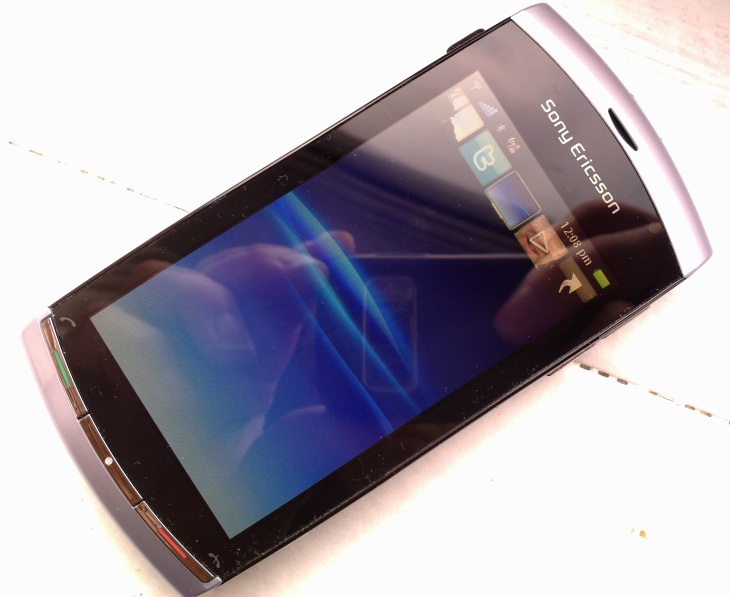
Reviewed by Steve Litchfield at





